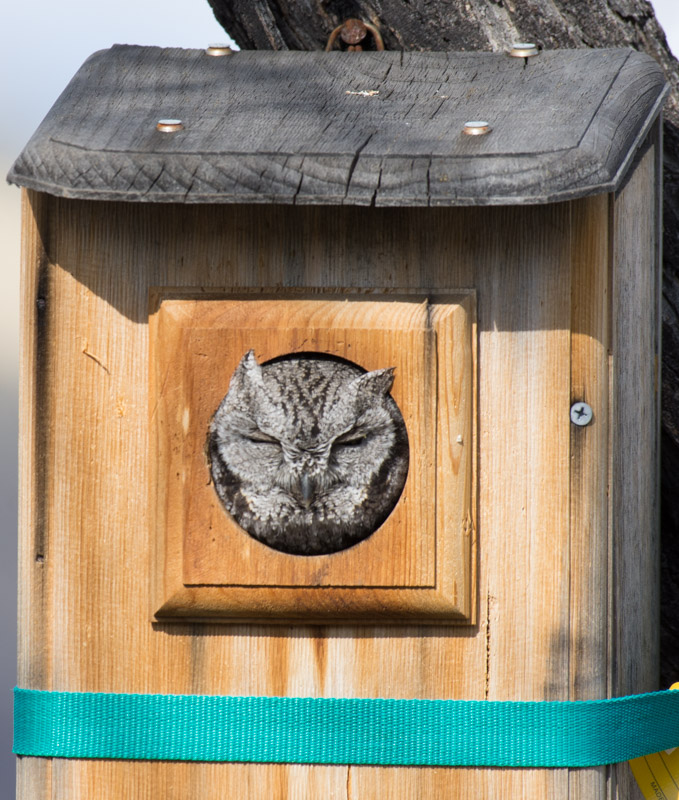By Dan Weisz
I’ve noticed nesting behavior by some of my favorite birds this week, all of whom are very common in the Foothills. You may be able to witness the same behaviors in your yards and neighborhoods now- look around!!
At the end of February, I sent out an email with photographs of three kinds of raptors. The first photos were of a male Great Horned Owl, part of a pair that were perching a neighbor’s palm tree. The pair continued to be seen almost every day in the same palms until last week when the female disappeared. It took me a few days but I located the nest in a tall, nearby pine tree. The owl has taken over an old Cooper’s Hawk nest. Great Horned Owls do not build their own nests. They use “pre-owned” nests that other large birds like raptors or ravens had built in previous years. This current nest has been used by a pair of Cooper’s Hawks but they’ll have to move this year. If all goes well, baby owlets will appear in about 30-35 more days. The female sits on the nest, tending the eggs, while the male remains on watch duty from a nearby perch. Here is the female on the nest:
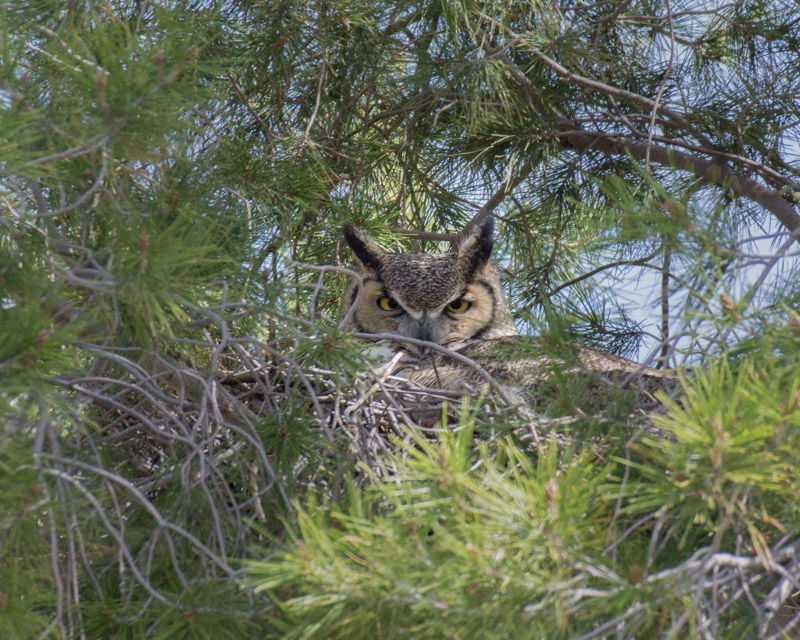
P.S. Great Horned Owls don’t always use other birds’ old nests. They may also just lay their eggs on a platform or other ‘good-enough’ space and proceed from that point on.
Yesterday I checked out a bridge north of town where I had seen Barn Owls in the past. I was not able to see any Barn Owls this time but I did find another Great Horned Owl on a very exposed nest at the side of the bridge. Again, hoping for a successful brood and baby owlets by the end of April.
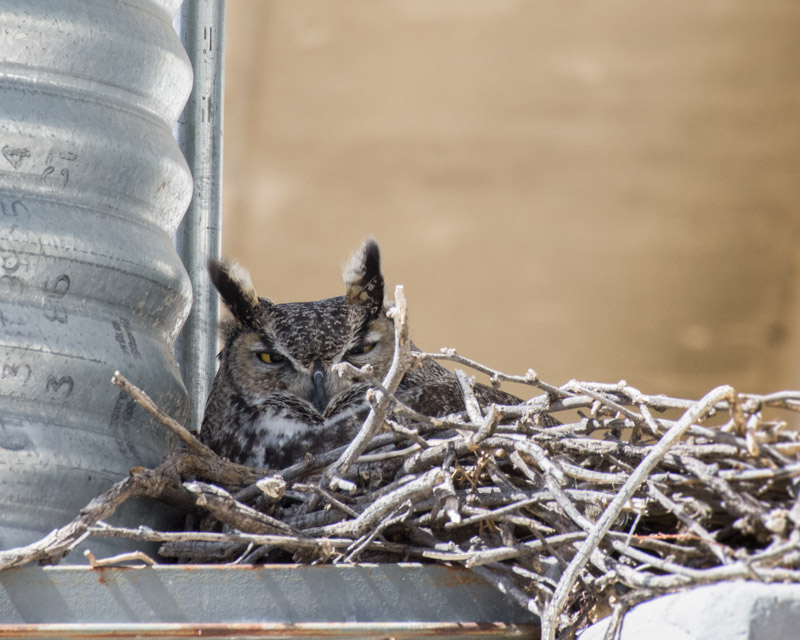
Last week, I saw that the pair of Barn Owls that I’ve visited in the agricultural areas of Pinal County were still a happy couple, enjoying a daytime snooze together. I’m not sure where their nest may be, but their most common breeding period is from late April to late May according to one source. While Barn Owls are not common in the Foothills, they are present in southern Arizona as well as on six continents. They specialize in feeding on rodents and are known to have the best high-frequency hearing in any animal tested by scientists.
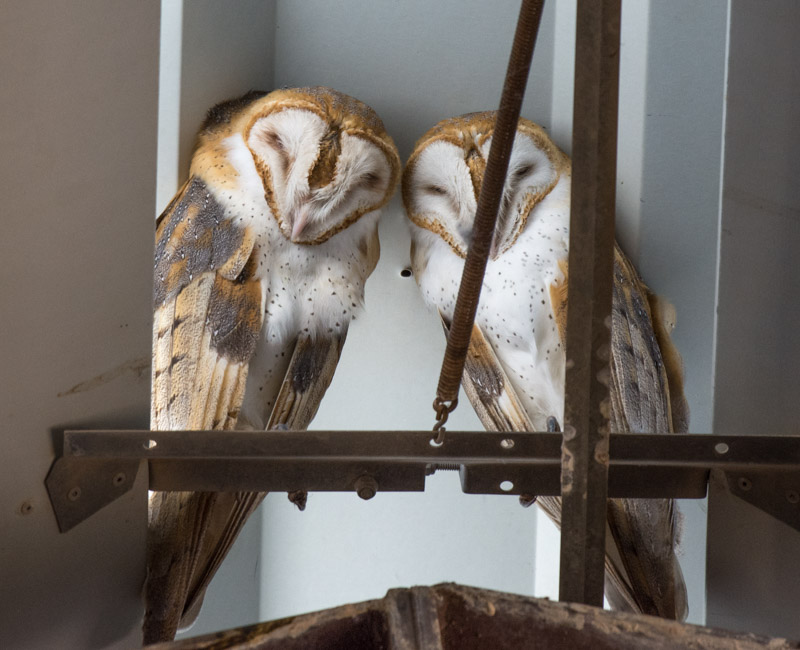
We’ve got Cpooper’s Hawks throughout the Foothills. At Sweetwater Wetlands, the resident pair of Cooper’s Hawks were very busy nest building this morning. Enjoy this series of photos as the hawks returned over and over with various twigs, some in their talons and some in their beak. It was heavily overcast, making the lighting difficult, and I had to try to shoot the birds as they appeared unannounced from various directions over vegetation and quickly headed into their cottonwood tree. Because of those conditions, the photos are less than sharp, but the imagery of their carrying twigs is strong. The peak nesting period for Cooper’s Hawks is from mid-May though mid-June.
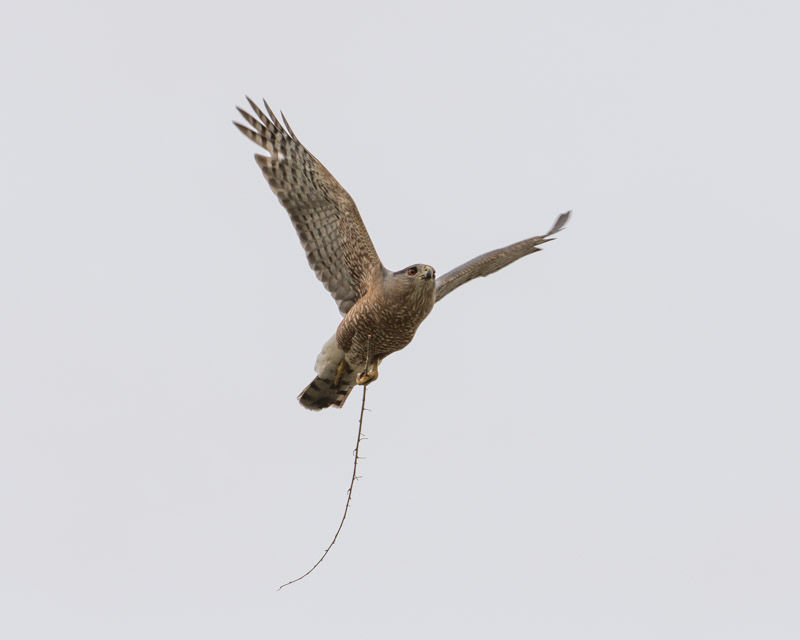
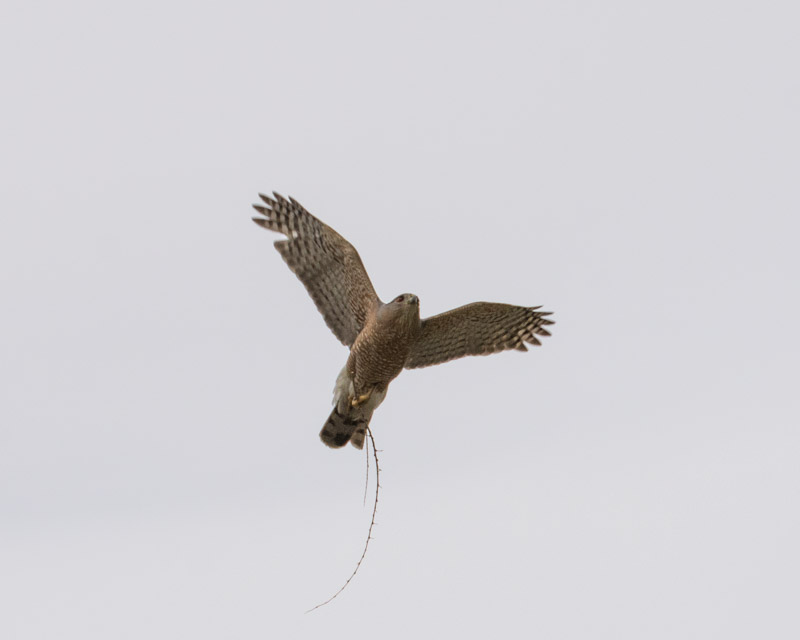
You may have noticed in the photos above that the Cooper’s Hawk has some white feathers that are flared out at the start of his tail. During courting display, the male Cooper’s Hawk will flare his under-tail covert feathers. You can see them when he is perched. You can also see that the center tail feathers are shorter than his outer tail feathers. Those short feathers are new and growing in and soon will be the longest tail feathers he has.
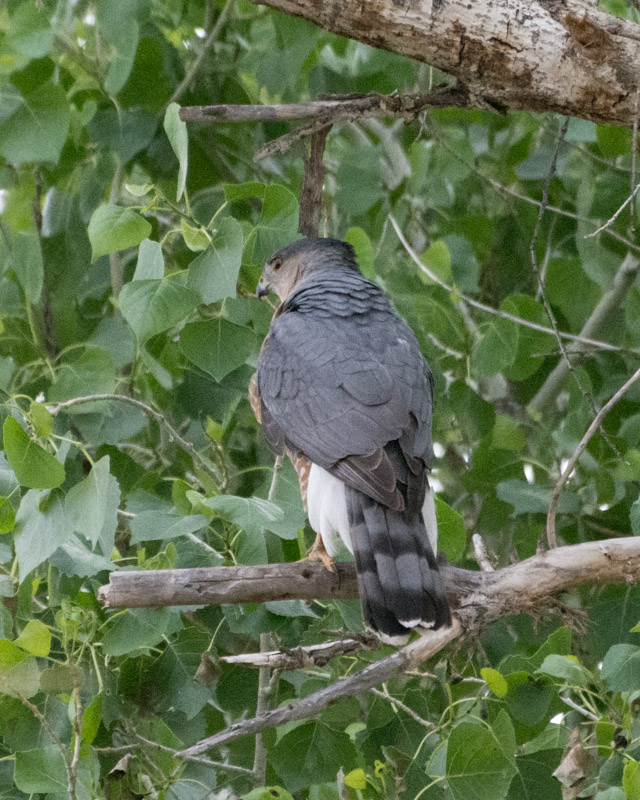
More twigs.
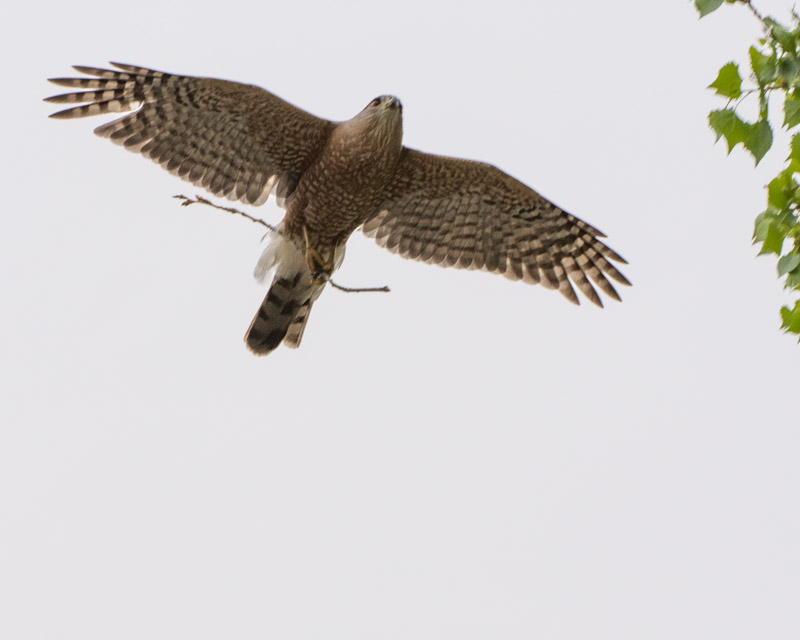
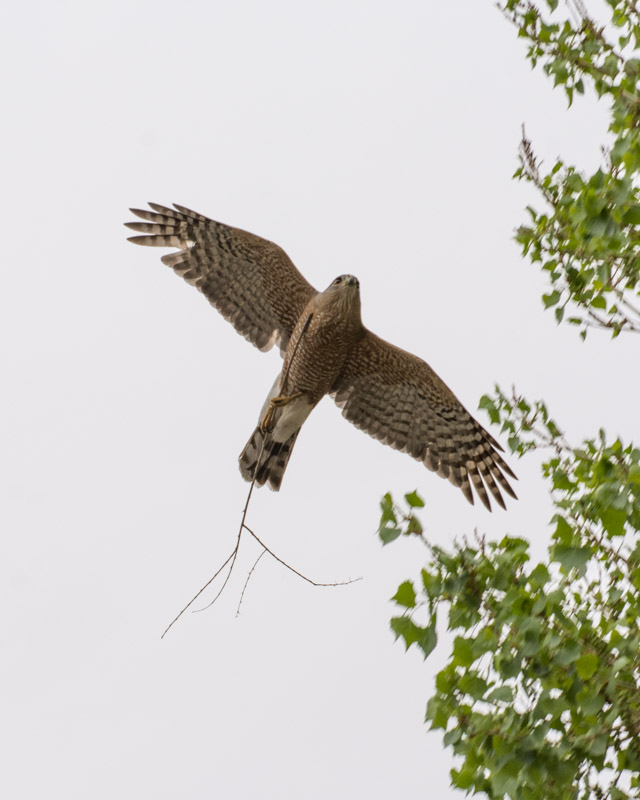
Finally, last year on March 15 I saw a Western Screech Owl in the nest box in my yard. I enjoyed watching this owl and her mate interact through the spring and then watching their behavior once their eggs hatched and they proceeded to feed their young. I had been hearing two screech owls “dueting” in my back yard over the past few weeks and hoped they would again occupy the nest box. Well look what I saw this afternoon! If all goes well, I’ll be watching Owl-TV for the next few months and hope to have pictures to share with you. Western Screech Owls are cavity nesters and they are also present throughout the Foothills.
